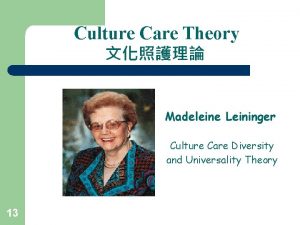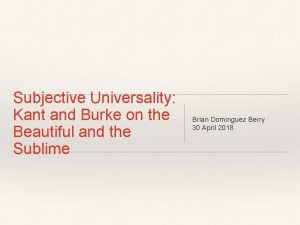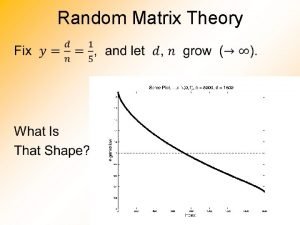Random Universality Random Matrix Theory and Extreme Value



- Slides: 3

Random Universality: Random Matrix Theory and Extreme Value Statistics Sethna / Myers Computational Methods in Nonlinear Science Universality: a surprising congruence or sharing of properties or characteristics between seemingly unrelated systems, usually attributed to deep underlying truths • Central Limit Theorem: The average of several random variables always has the same (normal or Gaussian) universal distribution. • Extreme value statistics: The largest of several random variables always has one of a few (Gumbel, Weibull, Fréchet) universal forms • Random Matrix Theory: large matrices, wherever they come from, have eigenvalues whose spacings have one of a few universal distributions.

Gumbel Distribution Extreme values: Biggest of Bunch Yearly values 4 144 100 784 256 81 324 441 196 625 361 1 841 4 25 900 100 4 576 Five year maxima → 784 → 441 → 841 → 900 Mississippi water level → Dike height for current administration Maximum cost of stock → Cost of 5 year stock option October rain level → Crop insurance cost Probability distributions for maximum X all have Gumbel distribution r(X) = -x) -(x+e e

Random Matrix Theory Eigenvalues of Large Matrices Eigenvalue l , eigenvector v of a matrix M M ·v = l v (Directions which stretch or shrink, but don’t rotate) Quantum energy states of atoms, nuclei Mechanics: moments of inertia Waves, drum vibrations: ∂2 h/∂t 2 = c 2 2 h standing wave h = f(x) cos wt -w 2 f = c 2 2 f = M f √-Eigenvalues = resonant frequencies Irregular drum, resonant absorption S Splittings S have level repulsion Stöckmann and Stein, PRL 64, 2215 (1990) Universal





